My First Foray into the R.E.P.O. Universe I vividly remember the day I decided to embark on my journey with the R.E.P.O. Game. It was a windy afternoon when I first downloaded the game, and I felt an unprecedented mix of excitement and curiosity. The game promised a blend of intricate gameplay, imaginative storytelling, and innovative technology...
Best Games Like R.E.P.O.
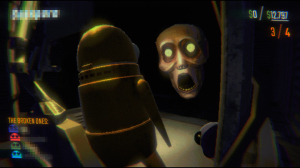
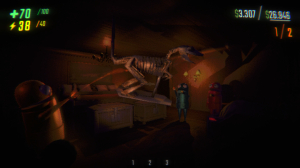
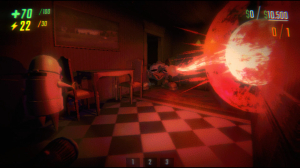
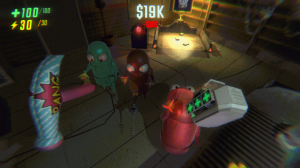
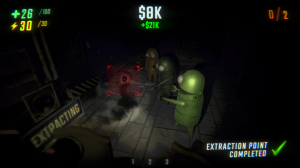
R.E.P.O.
My First Foray into the R.E.P.O. Universe
I vividly remember the day I decided to embark on my journey with the R.E.P.O. Game. It was a windy afternoon when I first downloaded the game, and I felt an unprecedented mix of excitement and curiosity. The game promised a blend of intricate gameplay, imaginative storytelling, and innovative technology that immediately piqued my interest. I prepared my gaming setup and dived into the realm of R.E.P.O., eager to explore every nuance of what appeared to be a groundbreaking creation in interactive entertainment.
Immersive and Thought-Provoking Gameplay
From the outset, the gameplay in R.E.P.O. captivated me with its unique blend of strategy and real-time decision-making. Every moment in the game feels charged with an adrenaline factor created by the dynamic challenges thrown at me. The game mechanics were thoughtfully designed, requiring me to constantly strategize while reacting swiftly to unforeseen events. This approach pushed me to develop a rhythm that married both analytical thinking and intuitive response. Every level introduced fresh challenges that escalated in complexity, ensuring that the experience remained engaging throughout every session.
The control scheme, which might initially appear minimalist, soon revealed layers of complexity that kept me on my toes. My initial struggles gradually gave way to a sense of mastery, and I soon found myself devising intricate plans to navigate the various puzzles and obstacles. I appreciated how the game rewarded both experimentation and persistence, allowing me to learn from each setback and refine my approach continuously. Never did I feel that the challenges were insurmountable, as each misstep provided a stepping stone towards a more sophisticated understanding of the game’s inner workings.
Visual Splendor and Aesthetic Brilliance
The visual design of R.E.P.O. is nothing short of spectacular. I was immediately drawn to a vivid mix of futuristic landscapes and meticulously crafted environments that imbued the game with a surreal atmosphere. The designers made impressive use of contrasting color schemes, dynamic lighting, and meticulously detailed textures that elevated the overall experience. Every scene and setting felt handcrafted, with layers of detail that beckoned me to look closer. I found immense pleasure in simply exploring the game world and appreciating the beauty woven into its fabric.
The use of environmental storytelling throughout the game was especially noteworthy. Subtle hints dropped through background scenery and visual cues enriched the narrative without relying on heavy exposition. I noticed that even ambient elements such as flickering neon signs or elusive shadows carried their own stories, all contributing to a richer immersive experience. This combination of art and subtle narrative integration has firmly established R.E.P.O. as a visionary piece in the landscape of modern gaming.
Auditory Delights and an Enchanting Soundscape
The auditory experience in R.E.P.O. proved to be equally compelling. I must commend the attention to sound design—not only does the game feature a memorable soundtrack, but the sound effects also play a significant role in reinforcing the atmosphere of the virtual world. The music dynamically shifts in pace and tone as the gameplay intensifies, balancing perfectly with moments of quiet introspection. I found that every track seemed tailored to the unfolding scenario, making each in-game moment feel almost cinematic in its scope.
In addition to the background score, ambient sounds and interaction cues further enhance the realism within the game. The rustling of digital leaves in simulated breezes, the resonating hum of futuristic cityscapes, and the carefully designed auditory markers that signal important events all combine to deliver a powerful sensory onslaught. Each sound was a testament to the dedication of the development team, crafting an environment that truly lives and breathes alongside the player.
Compelling Narrative and Unconventional Storytelling
One of the standout aspects of R.E.P.O. is its narrative structure. The game’s storyline initially presents itself as a labyrinthine detective tale entwined with elements of speculative fiction and existential inquiry. I was immediately enthralled by its ambition. Unlike many traditional games that rely heavily on cutscenes and direct exposition, R.E.P.O. unfolds its narrative gradually through exploration, character dialogue, and environmental symbolism. Every mission and in-game event serves as a piece of a larger puzzle, and I found myself eagerly anticipating the next revelation.
This nonlinear form of storytelling encouraged me to piece together clues from disparate parts of the game world. Each interaction and discovery felt significant, and I enjoyed the intellectual challenge of interpreting subtle narrative hints to forecast plot twists. The narrative does not spoon-feed its content; rather, it rewards inquisitiveness and exploration, leaving me with a sense of ownership over my interpretation of events. The writing is filled with unexpected turns and hidden meanings that invite repeated play sessions to entirely decipher what lies beneath the surface.
Complex Character Dynamics and Believable Personalities
The characters in R.E.P.O. are as intricate as the world they inhabit. I quickly grew attached to the cast, each bearing unique traits and backstories that made interactions feel authentic. My journey was interspersed with encounters involving enigmatic allies, morally ambiguous adversaries, and mysterious bystanders whose motives remained shrouded in secrecy. The dialogue-driven character development bore a striking resemblance to a well-crafted novel, and I relished every conversation for the depth and nuance it provided.
What struck me most was how decisions made during interactions could reverberate through the game, altering relationships and influencing subsequent events. The characters reacted with a believable range of emotions, from trepidation to elation, making the game an engaging emotional roller coaster. With every conversation, I felt increasingly invested in understanding the subtleties of each personality. The game does not rely on stereotypes; instead, it presents characters with both flaws and redeeming qualities, contributing to an overall narrative that is as intricate as it is emotionally rich.
Engaging and Varied Level Design
The level architecture of R.E.P.O. is another facet that deserves applause. I found every stage presented a unique challenge, adeptly integrating puzzle elements, strategic maneuvering, and exploratory freedom. Each level appeared designed with a strong underlying theme, unified by both visual and functional elements that emphasized continuity in the game’s expansive universe. I was continually impressed by the diversity of challenges—from tight corridors that demanded quick reflexes to sprawling, open areas that invited a more methodical approach.
This attention to detail in level design not only heightened the difficulty but also enriched the overall exploration experience. Rare moments of hidden paths and secret rooms lurked behind every corner, offering not just extra rewards but also layers of backstory waiting to be discovered. The game’s spatial design encourages me to revisit areas, often finding new perspectives and tactics that had initially gone unnoticed. I particularly appreciated the balance struck between guided paths and the freedom to wander, ensuring each play session felt both structured and liberating.
Robust Functionality and Seamless Controls
The functionality behind the R.E.P.O. Game is a marvel in its own right. Over the time I spent navigating its myriad features, I observed an intuitive interface built to facilitate smooth and responsive gameplay. The controls are thoughtfully mapped, allowing for the rapid execution of commands without a steep learning curve. I was pleasantly surprised by the ease with which I could switch between different modes and perspectives, making every action feel fluid and natural.
In addition, the game’s performance remained stable even during the most intense sequences. I encountered little to no lags or glitches, a testament to the careful engineering and rigorous testing behind the scenes. Even on longer sessions, the game maintained a consistent level of responsiveness, a detail I value immensely in any digital experience. The menu system, though minimalistic, is laden with subtle animations and transitions that not only delight the eye but also enhance usability. The overall operational efficiency of R.E.P.O. left me with a sense of appreciative awe, as each piece of functionality came together in a well-orchestrated performance.
Dynamic Multiplayer Interactions and Community Spirit
One aspect that significantly contributed to the game's long-term allure was its multiplayer component. I found that playing alongside others added an entirely new dimension to R.E.P.O. The collaborative challenges and competitive scenarios foster a vibrant community that thrives on strategic cooperation and friendly rivalry. Interacting with other players broadened my perspective of the game, introducing fresh tactics and innovative methods to approach obstacles.
The community features encouraged me to communicate with fellow enthusiasts, share strategies, and even exchange fan-created modifications that expanded the game’s replay value. Regular in-game events and competitions provided a sense of belonging and occasion, reaffirming that the game exists as not merely a solitary experience but a thriving ecosystem. I particularly appreciated how well the game balanced individual progress with collective interaction, ensuring that neither the lone adventurer nor the collaborative team felt out of place in its expansive landscape.
Explorative Mode and Environmental Interactivity
The game offers a robust exploratory mode that is both relaxing and mentally stimulating. I found that when I strayed from the main narrative arc, the game rewarded me with richly detailed environments that encouraged freeform exploration. Every corner of the game world teemed with interactive elements—from ancient inscriptions on digital ruins to futuristic relics hidden in quiet nooks. This mode of play allowed me to slow down and simply appreciate the intricate world-building that had gone into every facet of the design.
The environmental interactivity extended beyond mere aesthetics. Many objects were imbued with secondary functions, such as revealing hidden lore or presenting mini-challenges that occasionally led to rewards. I relished the unexpected discoveries and the spontaneous puzzles that broke the rhythm of the routine challenges. Exploring these environments often felt like piecing together an elaborate tapestry of history, culture, and technological wonder, each fragment contributing to the grandeur of the overall experience.
Strategic Depth and Customization Opportunities
One of the most engaging elements I encountered in R.E.P.O. was the option for deep strategic customization. The game allows extensive personalization of both gameplay mechanics and character attributes. I spent a significant amount of time fine-tuning my approach, unlocking new abilities and equipping specialized gear that complemented my preferred play style. This level of customization ensures that no two playthroughs are identical, reinforcing the game’s replayability and personal investment.
The in-game resource management, skill progression systems, and upgrade pathways are interwoven in such a way that every decision carries a weight of consequence. I enjoyed meticulously planning my progression, weighing the pros and cons of each upgrade pathway. This strategic layer transforms the gaming experience into an ongoing trial of intellect and foresight, as every choice could potentially ripple through later stages of the narrative. The interplay between tactical adjustments and emergent gameplay choices provided layers of satisfaction that extended far beyond the superficial.
Furthermore, the game’s economy and equipment systems are balanced in a manner that encourages creativity. I was never forced into a rigid mold but rather given the freedom to experiment with different builds and strategies that best suited my individual style. This underlying design philosophy resonated deeply with me, as it not only allowed me to express myself but also continuously adapted to my evolving approach to challenge and exploration.
Interactive Puzzles and Critical Thinking Challenges
R.E.P.O. distinguishes itself with a thoughtful integration of puzzles that stimulate critical thinking and creative problem solving. I often found myself pausing to decipher complex puzzles, each artfully designed to blend seamlessly into the game’s environment. These puzzles are not mere interruptions; instead, they serve as integral parts of the narrative and immersive experience. I was particularly taken by the way each puzzle was tied into the lore of R.E.P.O., reinforcing the overall thematic vision of the game.
Every puzzle I encountered pushed me to consider multiple perspectives and develop innovative solutions. Some challenges required precise timing and coordination, while others demanded an open-ended approach that allowed for a variety of viable solutions. I relished the chance to flex my mental muscles, and the satisfaction derived from solving each problem was immensely rewarding. These puzzles, while challenging, were never designed to frustrate to the point of discouragement; instead, they encouraged a balanced synergy of persistence, intuition, and cerebral agility.
One of the interesting aspects I noticed was how the puzzles often overlapped with other gameplay elements, providing an added dimension to exploration and strategy. This convergence of puzzles with character evolution and world-building elements underscored the care with which every facet of the game was designed, creating a rich tapestry of experience that engaged me on multiple levels concurrently.
- Engaging and dynamic gameplay that blends strategy with real-time decision making
- Stunning visual design with meticulously crafted environments
- Rich auditory experience with a dynamic soundtrack and immersive sound effects
- Intricate narrative that rewards exploration and critical thinking
- Deep character development with impactful dialogue and meaningful choices
- Extensive customization options allowing varied playstyles
- Smooth and intuitive controls ensuring robust functionality
- Vibrant multiplayer interactions that foster community engagement
- Steep learning curve for beginners due to complex mechanics
- Nonlinear storytelling may confuse players seeking straightforward narratives
- Occasionally challenging puzzles can lead to frustration for some players
- Graphics and Sound 9







